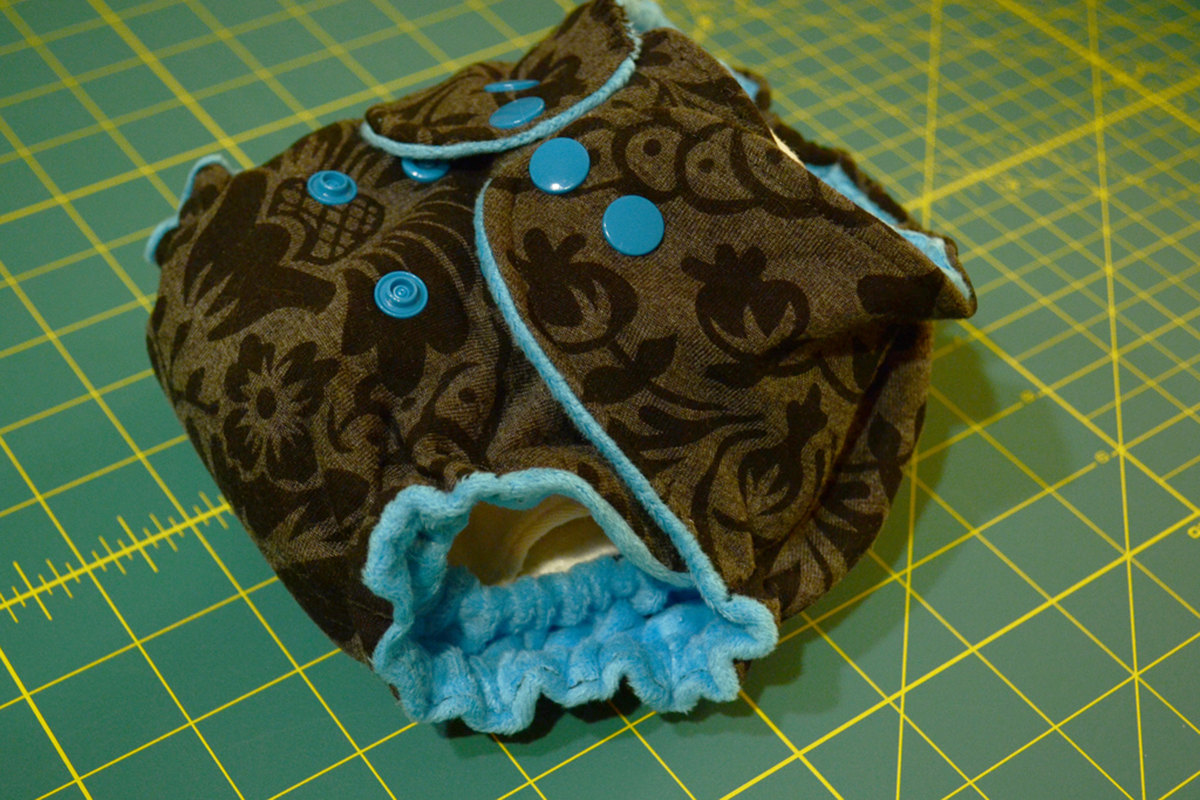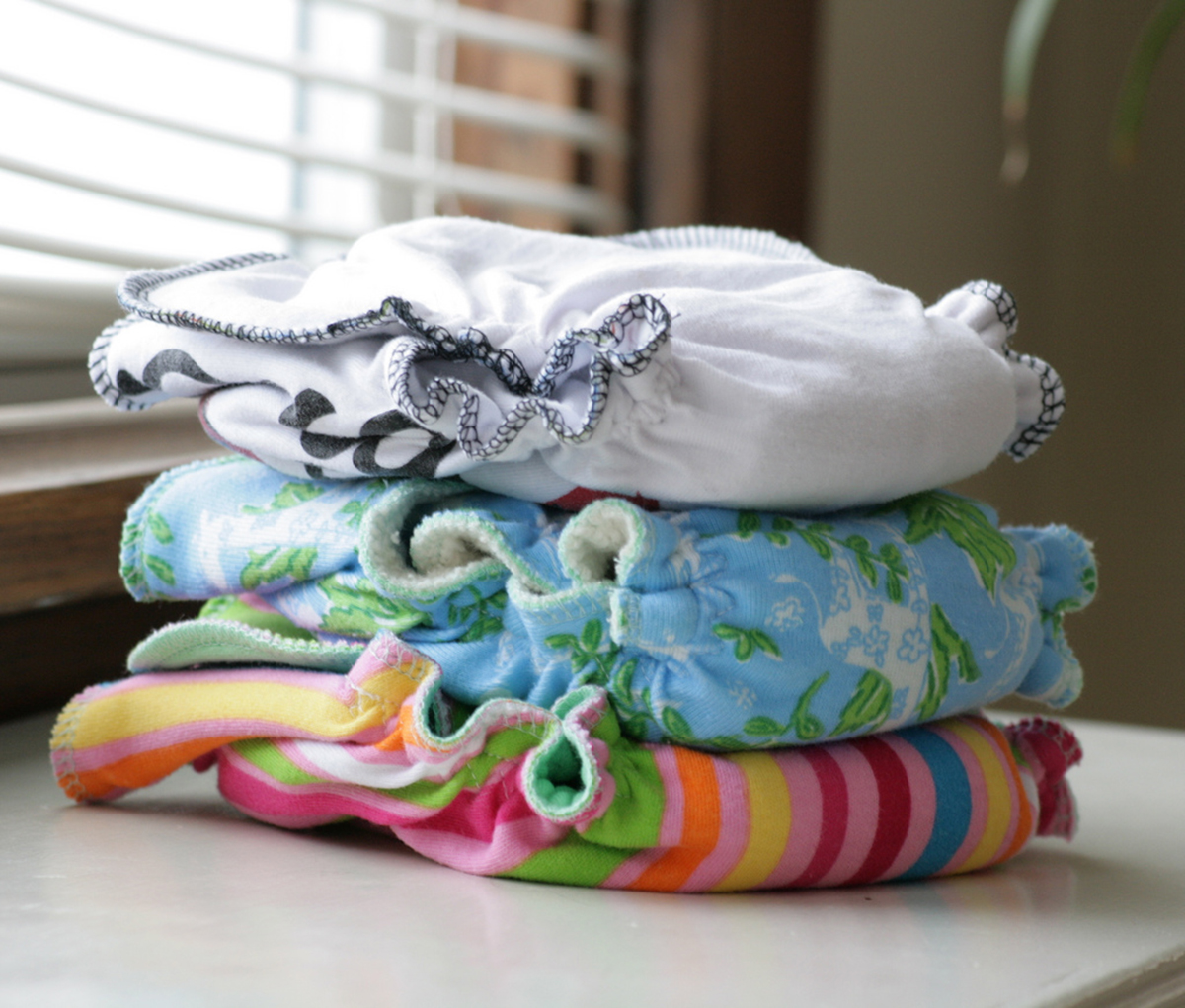We'll talk about different types of cloth diapers, how to use them, and why. Disposable diapers were a welcome change to the first generation of parents who tried them. These days, it's hard to imagine being a slave to cloth diapers washing them buy hand, folding them, and changing them frequently, because those diapers weren't all that absorbent.

A diaper you can simply throw away when it has been soiled must have sounded like a dream to those parents. But, sposies have a lot of strikes against them too.
Every single disposable diaper that was ever produced still exists today, and they make up a large part of the garbage in our landfill sites. Compared to modern cloth diapers, sposies aren't actually all that convenient, either.
Caring about the earth is certainly a great reason to use cloth diapers, but additionally they save money and may even save time and hassle, too. Does that sound counter-intuitive to you?
I agreed with you, when I started using cloth diapers a little over three years back when my second child was born. Admittedly, we mainly tried cloth for financial reasons. But, having diapered one baby in sposies and one in cloth, my honest verdict is that our cloth diapers were nicer to use. Throwing them in the washing machine doesn't take that much time, and depending on your drying method and the fabric of the diapers, drying them is quick too. We decided to line-dry our diapers, and we never ran out and had to run to the store late at night (like with sposies), or constantly make trips to the garbage container to throw used diapers away.
READ Congratulations, You're Going To Be A Dad! How Men Can Prepare For A New Baby
Cloth diapers smell nicer than disposable diapers because there are no chemicals, and parents tend to change cloth diapers more frequently because they are not quite as absorbent and using more diapers a day doesn't cost extra money. So, before discussing some places where you can buy cloth diapers, from expensive to budget-friendly, let's have a look at the different types of cloth diaper available on the market today:
1. Prefold diapers
These are much like the diapers our grandmothers used in some ways. They are flat squares that require folding, but prefolds consist of several layers and are now often made of special types of absorbent materials. Prefolds can be closed shut with safety pins or special diaper hooks called snappis. And to keep the baby's clothes dry, you will need a PUL or wool cover over the top of your prefold. Why choose prefolds? Well, they're the cheapest option, and they are quite versatile. It's possible to double up at night for extra absorbency, for instance.
Cloth Diaper: Fitted diapers
Fitted diapers are, like prefold diapers, made only out of absorbant fabrics without a water resistant layer. But these diapers are shaped and essentially look very much like Pampers or other disposable diapers. Instead of the stickers that seal pampers shut, fitted cloth diapers come with snaps or velcro. They need a water-proof cover, and come in one-size, adjustable edition, or in various sizes, and in a variety of different materials. They're convenient, but many users do find velcro wears out prematurely.
3. All-in-one diapers
Also known simply as AIO's in "diaper jargon", this is the cloth diaper that is most like disposable diapers in the way it is used. It looks very similar, and includes a water-resistant layer as well as absorbant fabrics. Like fitted diapers, AIO's can come in sizes (newborn, 3-6 months, etc) or can be one-sized, and adjustable with snaps to become smaller or larger. Though most people who are new to cloth diapers prefer the sound of all-in-one diapers, my experience tells me that you should not use them if you plan to line-dry your diapers. AIOs simply take too long to dry.

4. Pocket diapers
Pocket diapers are my favorite cloth diapers. They have an inner stay-dry layer next to the baby's skin and they also have a water absorbant layer on the outside. In the middle, there is a "pocket" where you place inserts. These inserts are the absorbant part. You can take them out for laundry, and also decide what kind of insert you use depending on the occasion or time of day (you'll benefit from thicker inserts at night).
Advice for new cloth users
There's a lot of choice, and buying cloth diapers can definitely be intimidating. It's best to start researching cloth diapers while you're still handling pregnancy signs and symptoms, rather than a newborn. There are several forums on the web devoted to cloth diapers, where experienced mothers will be willing to assist you in choosing. Those who don't want to launder their own diapers have the choice of using a diaper service. These services use prefolds, which they deliver to your door step. They pick your dirty diapers up, and give you diapers in new sizes when your baby needs them. This is more expensive, and less environmentally friendly because of the use of cars in transporting the diapers to and from you all the time. But the option is there. Those who want to launder their own diapers can do it every day, but I found that every two or thee days was fine.
READ A Non-Parent Guide To Baby Shower Gifts
Many diapers don't do well with fabric softeners, and there are special diaper detergents on the market. We never used those, and our diapers are still in fine condition. Do buy several types of diapers to try out which you like best. For a newborn, you'll need a minimum of 24 diapers if you use cloth full-time. We had 36 diapers the one-size pocket variety that lasts from birth till potty training and never worried about running out of clean diapers. If you'd like to try cloth and have any questions, feel free to ask and I'll do my best to help you. If you're already a seasoned cloth diapering parent, do share your experiences and suggestions!
- Photo courtesy of CatEyedKP: www.flickr.com/photos/50684853@N02/8663483867/
- Photo courtesy of MissMessie: www.flickr.com/photos/97335141@N00/4103956105/
- Photo courtesy of MissMessie: www.flickr.com/photos/97335141@N00/4103956105/


Your thoughts on this